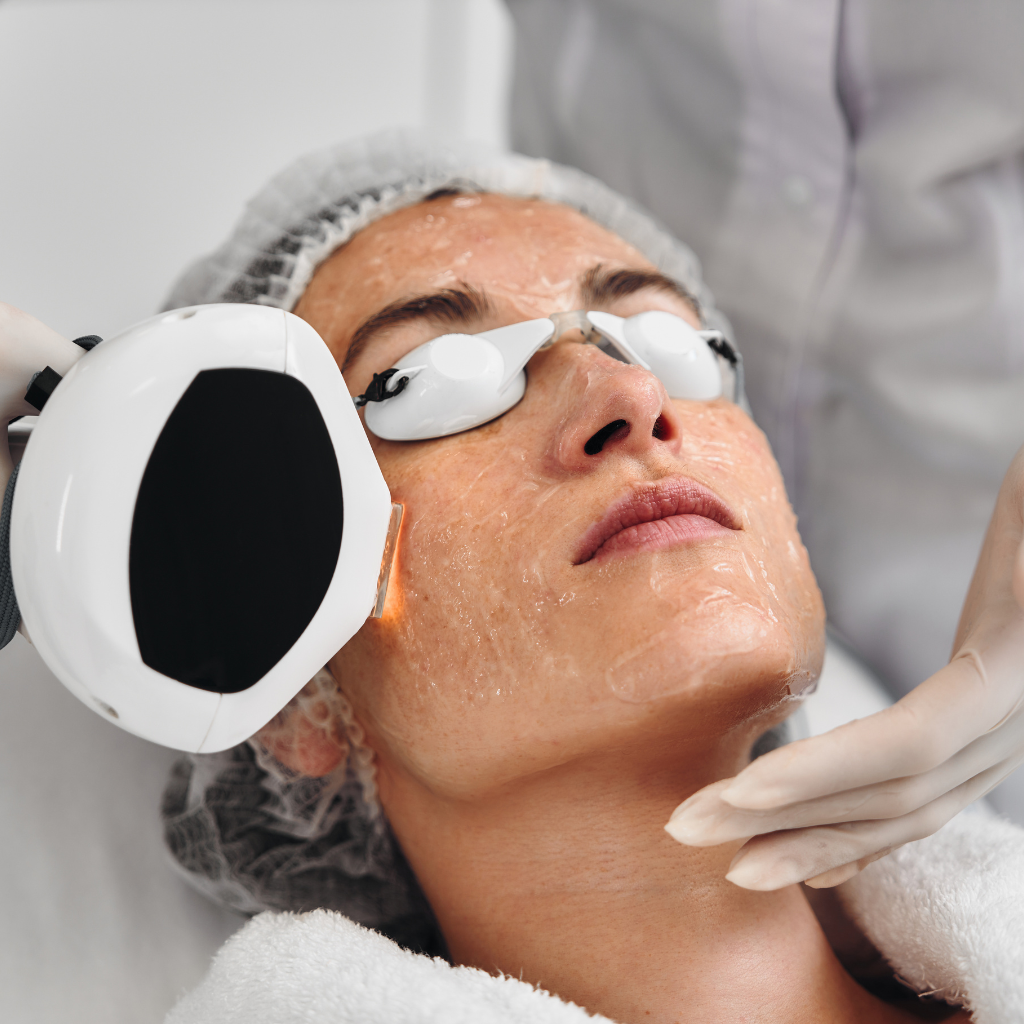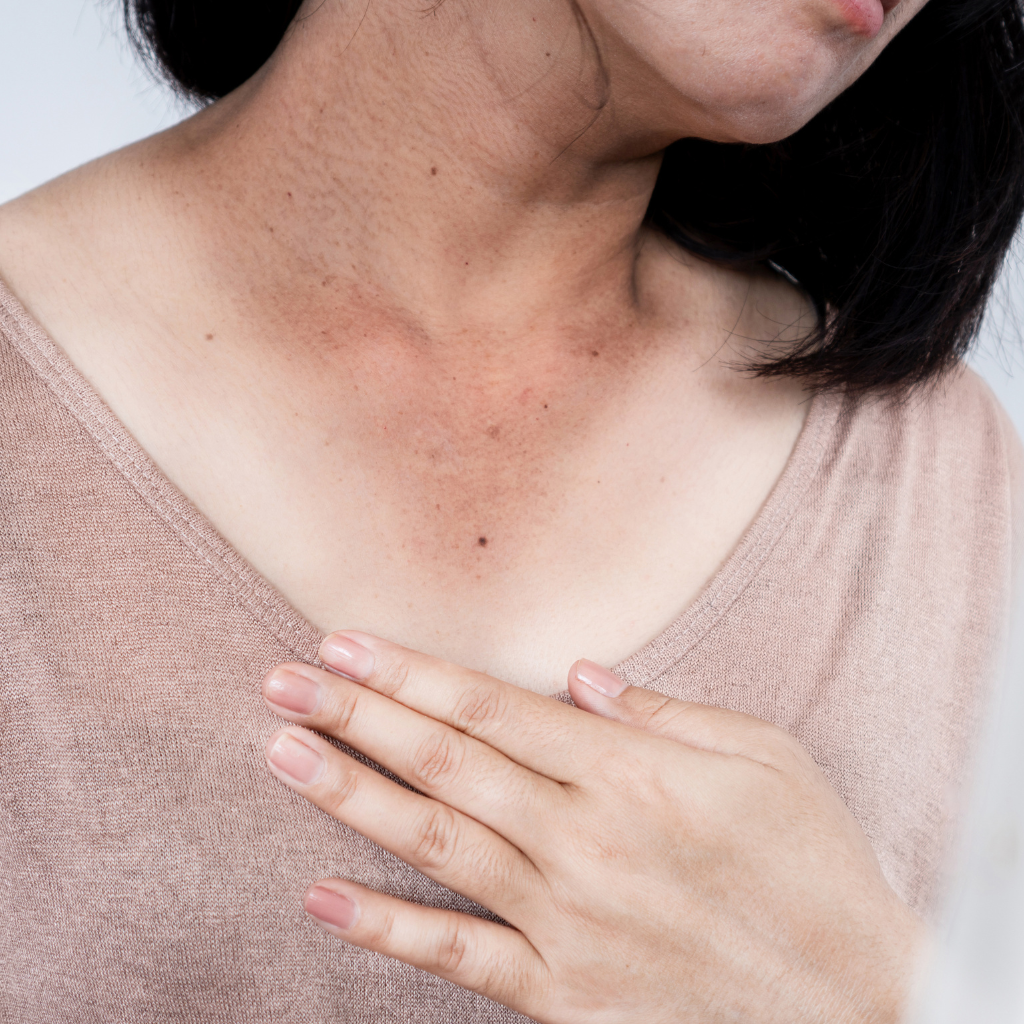How can you remove tan from your face and body? Best ways to remove tan

Combine regular exfoliation with natural remedies such as lemon juice, cucumber, and aloe vera to effectively remove a tan from the face and body. Exfoliating helps shed pigmented skin cells while the natural ingredients lighten skin and soothe sun damage. Protecting the skin with broad-spectrum sunscreen and avoiding peak sun hours further prevents uneven tanning and skin damage. Professional treatments like chemical peels and IPL therapies are also available for those seeking quicker results, revealing further insights into maintaining a healthy, radiant complexion.
How to Remove Body Tan?
Removing a body tan involves several practical steps, including targeted exfoliation techniques.These techniques help shed the tanned skin layers, revealing fresher skin underneath.Additionally, proper moisturizing is essential to restore and even out the skin tone post-exfoliation.
Steps to Remove Tan from Your Face
Exposure to the sun can leave one’s facial skin with a darker complexion, often a tan. Various techniques can efficiently remove tan from your face, from home remedies to clinical treatments. Aloe vera gel and lemon juice are popular for their natural bleaching properties, which help lighten the skin. For those preferring more advanced solutions, laser tan removal treatment and skin-lightening creams enriched with vitamin C can offer faster results. Gently exfoliating the skin can also aid in removing dead cells and enhancing skin peeling, further reducing tan appearance.
|
Method |
Description |
|
Home Remedies |
Aloe vera, lemon juice |
|
Clinical Treatments |
Laser treatment, skin lightening creams |
These options cater to varying preferences and skin sensitivities.
Exfoliation Techniques for Tan Removal
Exfoliation stands out as a vital technique to effectively remove tan from the body.
Exfoliation techniques focus on eliminating dead skin cells from the outer layer of the skin, which often harbours layers of tanned skin. By targeting these dead skin layers, one can reduce the appearance of the tan, promote skin lightening, and reveal fresher, less pigmented skin layers underneath. Body de-tan methods like gentle scrubbing or using exfoliating tools can aid in faster and more uniform removal.
Regular and gentle exfoliation can strip away the tanned outer layer, helping to remove tan more uniformly and prevent patchiness.
It is essential to choose methods suitable for one’s skin type to avoid irritation while ensuring that the skin’s natural renewal process is enhanced, thereby progressively diminishing the appearance of the tan.

Moisturizing to Restore Skin Tone
After exfoliation, moisturizing becomes essential in restoring the skin’s tone and health.
Adequate hydration can significantly aid in sun tan removal, fostering glowing skin by nourishing and revitalizing dried-out skin cells. Maintaining skin hydration is vital for enhancing the appearance of tanned skin and ensuring overall skin health.
- Rich Body Butters: Immerse the skin in creamy shea or cocoa butter, which provides deep hydration and helps restore skin tone.
- Hydrating Serums: Apply hyaluronic acid serums to attract moisture, reducing dry skin.
- Natural Oils: Coconut or almond oil can seal in moisture and promote glowing skin.
- Aloe Vera Gel: Soothes and hydrates, accelerating the recovery of sun-exposed skin.
- Night Creams: Overnight treatments to replenish moisture and repair skin cells.
What Are the Best Tan Removal Methods?
When exploring the most effective methods to remove a tan, evaluating various options that cater to different needs and preferences is essential.
Home remedies offer natural, cost-effective solutions, while professional treatments provide specialized approaches for more stubborn tans.
Additionally, over-the-counter tan removal products can be convenient for those seeking quick and accessible solutions.
Home Remedies to Remove Tan
While many commercial products claim to remove unwanted tans, numerous effective home remedies offer natural and gentle alternatives.
These methods can help restore the skin’s natural tone by addressing the accumulation of melanin, the natural pigment produced in the skin’s healthy response to sunlight exposure.
- Cucumber Extract: Soothes the skin and helps remove tan with its cooling effect.
- Exfoliating Scrubs: Homemade sugar or oatmeal scrubs help exfoliate skin and remove dead skin cells, revealing fresher skin underneath.
- Yoghurt and Tomato Paste: These natural skin-lightening products can reduce pigmentation and soothe sunburnt skin.
Professional Tan Removal Treatments
For individuals seeking more rapid and effective results, professional tan removal treatments offer a range of options designed to lighten the skin by targeting melanin buildup.
Skin clinics provide specialized services such as chemical peels and intense pulsed light (IPL) therapies, which are known for their effective sun tan removal capabilities.
Chemical peels use a specialized solution to exfoliate the skin, helping to remove sun tan and reduce skin damage.
IPL therapies use light pulses to penetrate the skin, breaking down excess melanin.
Each treatment is tailored to the individual’s skin type, ensuring skin health and aesthetic goals are met.
These professional tan removal treatments are recommended for those looking to improve their skin tone significantly.
Using Tan Removal Products
Beyond professional treatments, numerous over-the-counter tan removal products offer convenience and effectiveness.
These products target the outer layer of skin where the tan resides, promoting the shedding of darkened cells. As the skin tan fades, the natural skin colour is restored, often resulting in an even skin tone.
Various formulations lighten skin and provide nutrients that mitigate skin darkening in the future.
- Exfoliating Scrubs: Scrub away dead cells, revealing lighter skin beneath.
- Skin Lightening Creams: Contain ingredients that reduce melanin production.
- Chemical Peels: Accelerate skin turnover, peeling off the tanned layer.
- Bleaching Lotions: Used for localized skin bleaching, targeting darker patches.
- Brightening Masks: Infuse skin with compounds that enhance radiance and fade tanning.
How Does Sun Exposure Affect Skin Tan?
Sun exposure triggers the skin’s melanin production, leading to a darker complexion as a natural defence against ultraviolet radiation.
Dead skin cells are critical in maintaining this tan, as they are saturated with melanin.
Prolonged exposure can also result in distinct tan lines, highlighting areas shielded from the sun compared to those directly exposed.
Understanding the Darkening of the Skin
When skin is exposed to sunlight, it reacts to natural sunlight by producing more melanin, the pigment responsible for skin colour. This natural pigment helps protect the skin from ultraviolet rays that can cause sun damage and skin irritation.
Increased melanin production leads to darker skin tones and tanned skin cells, which are the body’s way of shielding itself from further UV harm.
- Golden sunlight bathes the skin, triggering melanin shields.
- Shadows deepening on sun-kissed surfaces, marking the memory of rays
- A spectrum of skin tones, from light to dark, under the summer sky
- Freckles appear like scattered stars across the bridge of the nose.
- The subtle gradient from pale to tanned reflects hours spent outdoors.
This process also raises concerns about protecting and potentially lightening the skin after prolonged exposure.

The Role of Dead Skin Cells in Tanning
Most visible skin colour changes from tanning can be attributed to the behaviour of dead skin cells. When the skin is exposed to UV rays, these rays penetrate the various layers of skin, prompting the production of melanin.
This pigment helps protect deeper layers from skin damage and potential skin cancer but also darkens skin tone. Dead skin cells that have accumulated melanin remain on the surface, contributing to a darker appearance.
Regularly exfoliating helps remove these pigmented dead cells, aiding in tan removal and revealing fresher skin. However, excessive sun exposure without protection can accumulate damaged, dead skin cells, intensify the tan and increase the risk of skin abnormalities.
Impact of Sun Exposure on Tan Lines
While sunlight is essential for vitamin D production, it also greatly influences the development and appearance of tan lines. Extended sun exposure can harm the skin and enhance the visibility of tan lines, as UV radiation intensifies skin pigmentation.
A broad-spectrum sunscreen lotion can help protect the skin from sun damage and mitigate the formation of uneven tan lines.
- Golden rays piercing through the tree leaves, creating patterns on the skin
- Bright beach days, where the sun tan deepens under the relentless sun
- Sporting activities leave distinct tan lines on exposed skin
- A gradual fading of tan lines with reduced sun exposure
- Application of sunscreen creates barriers, protecting vulnerable skin areas
These factors are vital in effectively getting rid of a tan.
How Can You Protect Your Skin from Tanning?
Protecting one’s skin from excessive sun exposure is vital to prevent tanning and reduce the risk of skin damage.
Various methods, including protective clothing and accessories, offer practical barriers against UV rays.
Additionally, broad-spectrum sunscreen is essential for safeguarding exposed skin areas during outdoor activities.
Best Practices for Protecting Your Skin from the Sun
To properly protect your skin from the sun’s harmful rays, adopting an all-encompassing approach is essential. Protecting your skin is essential to prevent premature aging and reduce the risk of excessive UV light.
Here are key strategies:
- Avoid Peak Hours: Stay indoors or seek shade between 10 AM and 4 PM when ultraviolet radiation is at its peak.
- Sunscreen Application: Apply a broad-spectrum sunscreen with a minimum SPF of 30 to block harmful UV rays, reapplying every two hours or after swimming.
- Stay Hydrated: Maintaining skin hydration by drinking ample water helps maintain its resilience against sun damage.
- Limit Sun Exposure: Reduce time spent in the sun to avoid excessive sun exposure.
- Monitor UV Levels: Pay attention to daily UV index forecasts to plan outdoor activities safely.
Clothing and Accessories as Skin Protection
In addition to behavioral adjustments like avoiding peak sun hours and using sunscreen, wearing the proper clothing and accessories greatly enhances protection against tanning.
Covering skin with fabrics that limit sunlight exposure reduces the absorption of harmful rays, specifically UV rays known to cause premature aging and dark spots.
Opting for tightly woven fabrics or UV-protective clothing can decrease the risk of further tanning and promote a more even skin tone.
Wide-brimmed hats and UV-protective sunglasses also shield the skin and reduce the risk of issues linked to increased exposure, such as an increased risk of skin cancer.
Using Sunscreen to Prevent Skin Tan
While protective clothing is key in preventing tans, applying sunscreen is equally critical.
Sunscreen acts as a barrier, preventing the UV rays that increase the risk of skin damage and promote sun-tanned skin. It’s essential in maintaining an even skin tone and preventing areas of skin from becoming darker than others.
- Imagine the gentle application of sunscreen, forming a protective shield over various skin types.
- Visualize a day at the beach without worrying about how to remove the body tan later.
- Think of the relief in skipping remedies to remove a tan.
- Envision long-lasting, healthy skin around the face and body.
- See yourself enjoying the outdoors, confident that your skin is well-protected.
How to Get Rid of a Tan and Maintain Healthy, Glowing Skin
Turning to effective remedies for tan removal, the application of aloe vera and lemon juice has been popular for lightening the skin and rejuvenating it.
Another aspect to evaluate is the potential of chemical peels in safely eliminating tan and their effectiveness compared to natural methods.
In addition, it is essential to address how such treatments can aid in preventing dark spots and skin cancer, thereby maintaining skin health and glow.
The Role of Aloe Vera and Lemon Juice in Removing Sun Tan
Aloe vera and lemon juice are popular natural remedies for reducing sun tan. These components are effective in further sun exposure, aiding the process to get rid of a tan from face and body, promoting a visible reduction in tan.
Various home remedies can help restore the original skin tone, and these two natural ingredients stand out in their efficacy.
- Aloe Vera: Calms and hydrates the skin, helping to fade the appearance of a tan.
- Lemon Juice: Serves as a natural bleaching agent, reducing melanin production.
- Combination Application: Enhances sun tan removal treatments.
- Direct Sunlight Avoidance: Post-application is essential to prevent further darkening.
- Regular Use: Necessary to see a significant change in skin tone and tan reduction.
Preventing Dark Spots and Skin Cancer While Restoring Skin Health
Beyond simply addressing sun tan, it is essential to contemplate the broader implications of prolonged sun exposure, including dark spots and an increased risk of skin cancer.
One of the most effective solutions for removing tan and preventing these risks involves embracing sun tan removal treatments tailored to a person’s skin tone.
Avoiding tanning beds and opting to self-tan at home can markedly reduce exposure to harmful UV rays, helping maintain skin health.
Additionally, education on how to tan more safely and the appropriate time for a tan to fade naturally is vital.
These strategies are integral in preventing dark spots and skin cancer while restoring skin health.

Chemical Peels for Tan Removal: Are They Safe and Effective?
Chemical peels are widely used as sun tan removal treatments due, in part, to their ability to penetrate deep into the skin. These treatments involve the application of a chemical solution that oxidizes existing melanin, which can lighten the tan.
However, the safety and effectiveness depend greatly on the person’s skin tone and the strength of the peel.
- A radiant glow as the old, tanned layer peels away
- The stinging sensation during the peel application
- The emergence of fresh, rejuvenated skin
- Visual peeling that can last several days
- Temporary redness and sensitivity post-treatment
The results justify the mild discomfort for many, as the tan may visibly reduce, revealing brighter skin.
Conclusion
In summary, removing and preventing skin tan involves a combination of methods including exfoliation, proper use of sunscreen, and incorporating natural remedies. Understanding how sun exposure affects the skin is essential in adopting protective measures. By consistently applying these strategies, one can effectively diminish existing tans and maintain healthy, glowing skin. It’s critical to prioritize skin health over aesthetic benefits and guarantee that any approach is gentle and suited to individual skin types.

Dr. Sheena Majella is a certified dermatologist and the leading skin specialist at Tune Aesthetics. With a deep passion for skin health and beauty, she combines medical expertise with advanced aesthetic treatments to help clients look and feel their best.





